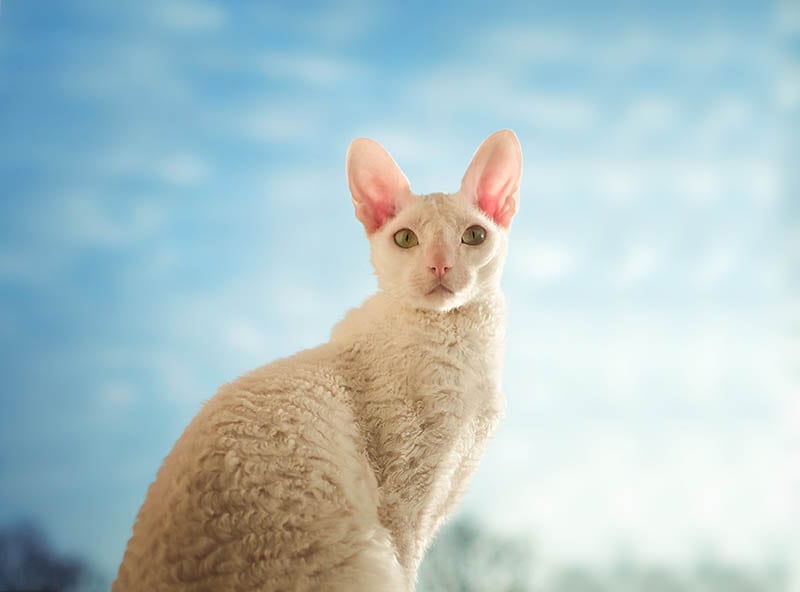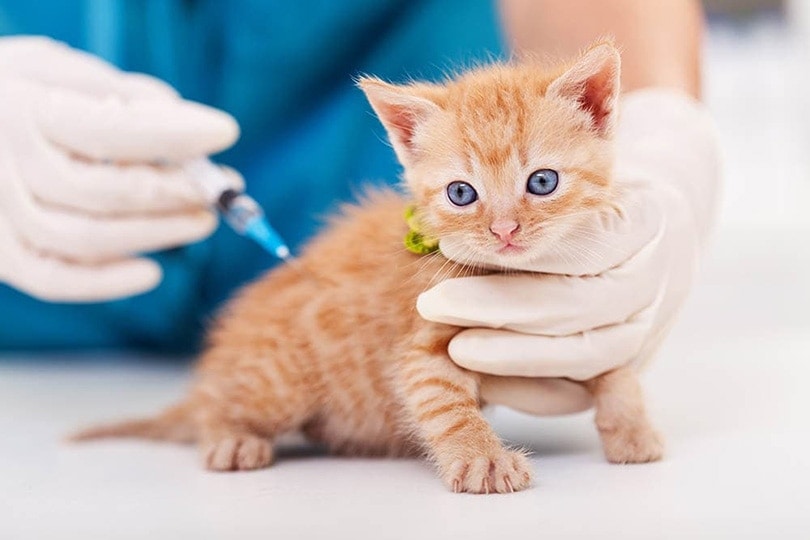How to Fly With a Cat: 7 Vet-Approved Travel Tips

Updated on
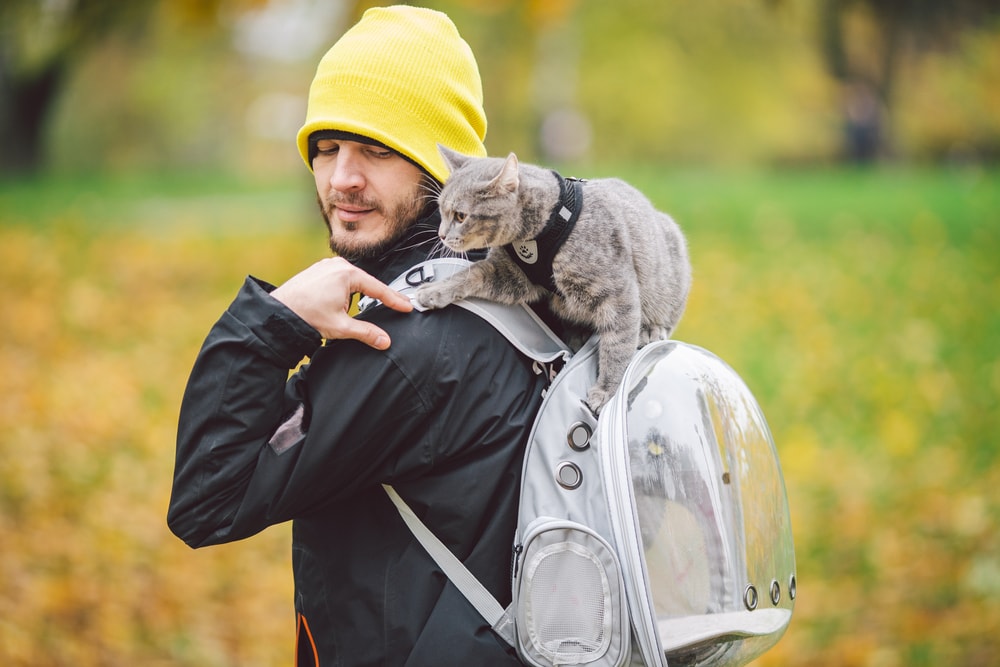
Whether traveling for business or pleasure, flying can be stressful. Add a beloved pet into the mix, and it can seem overwhelming! However, your cat’s flight can be made as stress-free as possible by being prepared. We’ve gathered seven top tips for flying with your cat to make the journey smoother for you and your feline friend.
The 7 Travel Tips for Flying With a Cat
1. Be Prepared
There’s nothing worse than coming up against unexpected problems when carrying precious cargo, so planning your trip and getting everything you need ready to go in plenty of time is the best way to prevent unnecessary stress and delays.
This also includes making plans in case delays are experienced since you can’t ever foresee all the problems that could arise. Mapping out the airport is another important part of the preparation, as many now have “rest stops” or areas where you can let your pet relax away from other travelers. Remember that you won’t be able to let your cat out of their carrier for their safety, though, and dogs may also use the area.
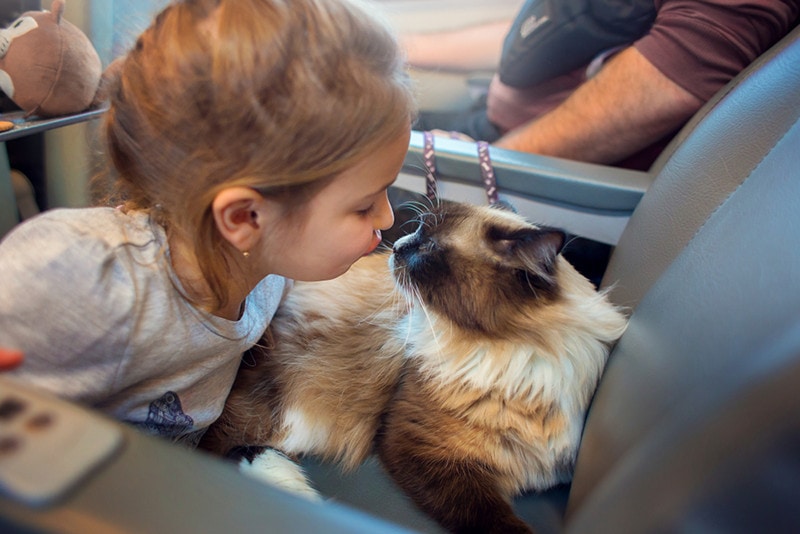
2. Ensure That Your Cat Can Travel With the Airline You’re Flying With
Airlines have different policies concerning pets and how they travel. Some restrict pets (including cats) to the cargo hold, which can be a very stressful place for them to travel. Many airlines allow cats in carriers in the cabin as long as they can fit under the seat.
The seat dimensions and preparations required by the airline are available on their websites. Some airlines have restrictions and requirements such as:
- How many cats are allowed per carrier (usually only one)
- How many pets per passenger
- Seat bookings
- Fees and additional payments
3. Invest in a Quality Carrier
Your cat’s carrier is probably the most important safety factor in airline travel, and it must be comfortable and strong enough to keep them secure. Each airline has different requirements regarding the carrier’s dimensions.
The carrier must have enough space for your cat to stand up, lie down, and turn around comfortably. A soft-sided carrier is ideal for cabin travel since it’s easier to fit under the seat.
A good way to help your cat get comfortable in their carrier when traveling on a flight is by getting them used to their carrier before departure. Leaving the carrier open, putting treats inside, and making it a fun and safe space for them to relax in will make it a much more pleasant experience.
Practicing entering and exiting the carrier with your cat, including a short walk with them in your arms, is very important. Airlines require you to pass your cat’s carrier through the X-ray machine, and your cat will need to be removed from it when they do.

4. Visit the Vet
A clean bill of health for your cat is incredibly important before you travel with them. Airlines require a health certificate from your vet that shows your cat is healthy and up to date with all the necessary vaccinations.
This also includes certificates and test results you may need to show before you travel, alongside rabies vaccination proof, depending on your destination. Older, unwell, or very young cats may be prohibited from flying. Most airlines have a minimum flight age.
5. Try Pheromone Spray
Pheromone sprays are an effective way to help your cat relax during a flight. There are a few brands of pheromone sprays available, such as Feliway or Sentry’s Calming Spray, but the pheromone is usually the same.
Calming cat pheromone sprays use a synthetic version of the feline appeasing pheromone that cats release from glands on their body. The glands on their head, paws, and flanks release pheromones as scent markers, which help your cat feel comfortable and “at home.”
Spraying your cat’s carrier 20 minutes before travel can help them relax and stay comfortable during the flight.
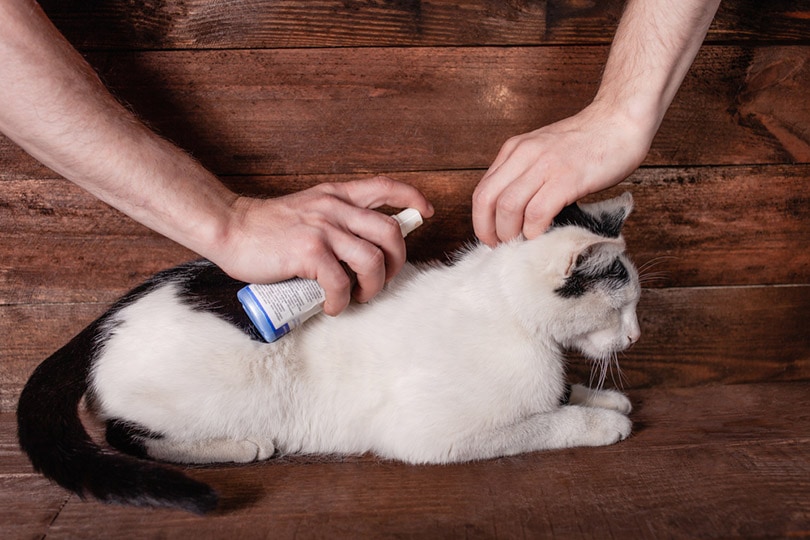
6. Avoid Feeding Your Cat Before Travel
Some cats may get sick or drool when traveling, either on the way to the airport or on the flight. Motion sickness is common and can be exacerbated by stress.
- Drooling
- Vocalizing (crying or yowling)
- Excessive lip licking
- Pooing
- Defecating
- Restlessness and pacing
If you are traveling in the morning, avoid giving your cat their breakfast, but make sure they have plenty of fresh water. An empty stomach can reduce nausea and prevent vomiting if your cat gets travel sickness. If you are traveling later in the day, ensure that you feed them a few hours before the flight to allow them to digest. Bring extra food, packed and ready, in case there are delays. Healthy adult cats can only go for 10–12 hours without food.
7. Use Puppy Pads
Puppy pads can keep your cat comfortable and dry if they do have an accident. Puppy pads under a soft towel can contain accidents or vomit and will keep your cat’s carrier clean on their journey. Bringing gloves and trash bags to dispose of the soiled pads is also recommended.
Giving your pet a quick bath is much easier using wet wipes, but you do need to make sure they're safe for your pet's skin. Our gentle, effective Hepper Wash Wipes are hypoallergenic and made with natural, moisturizing ingredients. Manufactured in the USA, these convenient wipes are safe for cats and dogs of all ages, sizes, and breeds.
What If My Cat Doesn’t Travel Well?
If you know your cat doesn’t travel well, consider whether taking them on the journey is necessary. If you decide not to bring your cat when you fly, cat sitters or boarding are options you could look into. However, if you must fly with your cat, speaking to your veterinarian about medications that could help is recommended.
Calming medications are an option for cats that become very stressed during travel, but there are other products that can help, such as thunder shirts. If your vet prescribes a medication to help your cat during travel (such as buprenorphine), make sure you test it before you travel and monitor your cat closely for any side effects.
Conclusion
Flying with your cat can seem daunting, but there are many ways to make the process as pleasant and efficient as possible. Effective planning is the best thing you can do to reduce stress for you both, including making a plan and timeline for when each step needs to be completed.
Vaccines can take a while to complete, so ensuring you have enough time and have contingency plans for when things don’t go to plan (such as delays) can help you and your cat get to your destination safely and happily.
Featured Image Credit: Frau aus UA, Shutterstock





